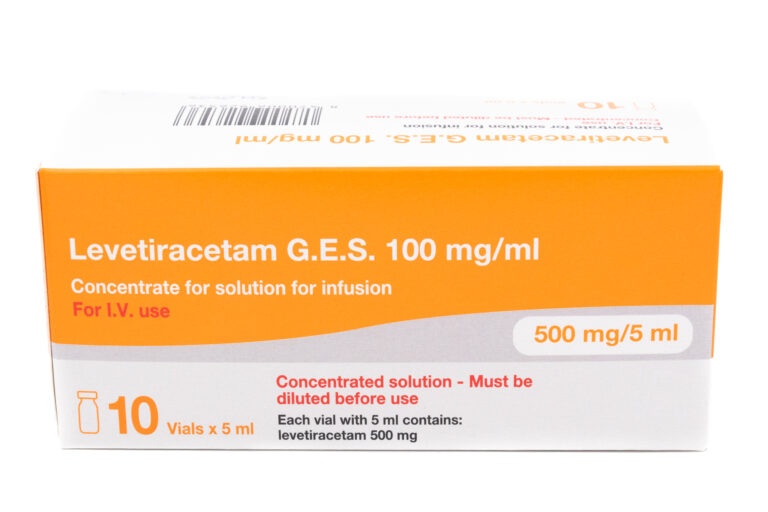

ЛЕВЕТИРАЦЕТАМ АЛТАН 100 мг/мл КОНЦЕНТРАТ ДЛЯ ПРИГОТОВЛЕНИЯ РАСТВОРА ДЛЯ ИНФУЗИЙ

Спросите врача о рецепте на ЛЕВЕТИРАЦЕТАМ АЛТАН 100 мг/мл КОНЦЕНТРАТ ДЛЯ ПРИГОТОВЛЕНИЯ РАСТВОРА ДЛЯ ИНФУЗИЙ

Инструкция по применению ЛЕВЕТИРАЦЕТАМ АЛТАН 100 мг/мл КОНЦЕНТРАТ ДЛЯ ПРИГОТОВЛЕНИЯ РАСТВОРА ДЛЯ ИНФУЗИЙ
Введение
Прошу: информация для пациента
Леветирацетам Алтан 100 мг/мл концентрат для приготовления раствора для инфузии ЕФГ
леветирацетам
Прочитайте внимательно весь листок перед тем, как вы или ваш ребенок начнете использовать это лекарство, поскольку оно содержит важную информацию для вас.
- Сохраните этот листок, поскольку вам может понадобиться прочитать его снова.
- Если у вас есть какие-либо вопросы, проконсультируйтесь с вашим врачом или фармацевтом.
- Это лекарство было назначено только вам и не должно быть передано другим людям, даже если у них такие же симптомы, как у вас, поскольку оно может нанести им вред.
- Если вы испытываете побочные эффекты, проконсультируйтесь с вашим врачом или фармацевтом, даже если это побочные эффекты, которые не перечислены в этом листке. См. раздел 4.
Содержание листка
- Что такое Леветирацетам Алтан и для чего он используется
- Что вам нужно знать перед началом использования Леветирацетам Алтан
- Как использовать Леветирацетам Алтан
- Возможные побочные эффекты
- Хранение Леветирацетам Алтан
- Содержание упаковки и дополнительная информация
1. Что такое Леветирацетам Алтан и для чего он используется
Леветирацетам является противоэпилептическим лекарством (лекарством для лечения приступов эпилепсии).
Леветирацетам Алтан используется:
- в качестве монотерапии у взрослых и подростков от 16 лет с недавно диагностированной эпилепсией для лечения одной формы эпилепсии. Эпилепсия - это заболевание, при котором пациенты испытывают приступы (приступы). Леветирацетам используется для лечения формы эпилепсии, при которой приступы первоначально поражают только одну сторону мозга, но могут затем распространиться на более обширные области в обоих полушариях мозга (приступы парциального начала с или без вторичной генерализации). Ваш врач назначил леветирацетам, чтобы уменьшить количество приступов.
- в комбинации с другими противоэпилептическими лекарствами для лечения:
- приступов парциального начала с или без вторичной генерализации у взрослых, подростков и детей от 4 лет.
- миоклонических приступов (коротких, судорожных сокращений мышц) у взрослых и подростков от 12 лет с ювенильной миоклонической эпилепсией.
- примарных генерализованных тонико-клонических приступов (больших приступов, включая потерю сознания) у взрослых и подростков от 12 лет с идиопатической генерализованной эпилепсией (типом эпилепсии, который, как считается, имеет генетическую причину).
Леветирацетам Алтан концентрат является альтернативой для пациентов, у которых пероральное введение временно неосуществимо.
2. Что вам нужно знать перед началом использования Леветирацетам Алтан
Не используйте Леветирацетам Алтан
- Если вы аллергичны к леветирацетаму, производным пириролидона или любому другому компоненту этого лекарства (перечисленному в разделе 6).
Предостережения и меры предосторожности
Проконсультируйтесь с вашим врачом перед началом использования Леветирацетам Алтан
- Если у вас есть проблемы с почками, следуйте инструкциям вашего врача, который решит, нужно ли вам корректировать дозу.
- Если вы заметите любое снижение роста вашего ребенка или неожиданное развитие полового созревания, свяжитесь с вашим врачом.
- Небольшое количество людей, получающих лечение противоэпилептическими лекарствами, такими как Леветирацетам Алтан, имели мысли о причинении вреда себе или суицидальные мысли. Если у вас есть какие-либо симптомы депрессии и/или суицидальные мысли, свяжитесь с вашим врачом.
- Если у вас есть медицинские или семейные анамнезы нерегулярного сердечного ритма (видимого на электрокардиограмме), или если у вас есть заболевание и/или вы получаете лечение, которое делает вас склонным к сердечным аритмиям или нарушениям баланса электролитов.
Сообщите вашему врачу или фармацевту, если любой из следующих побочных эффектов ухудшается или длится более нескольких дней:
- Аномальные мысли, чувство раздражительности или агрессивности или если вы или ваши близкие заметили значительные изменения в вашем настроении или поведении.
- Ухудшение эпилепсии
В редких случаях приступы эпилепсии могут ухудшаться или возникать чаще, особенно в течение первого месяца после начала лечения или увеличения дозы.
В очень редкой форме ранней эпилепсии (эпилепсия, связанная с мутациями SCN8A), которая вызывает множественные типы приступов эпилепсии и потерю навыков, вы можете заметить, что приступы продолжаются или ухудшаются во время лечения.
Если вы испытываете любой из этих новых симптомов во время приема Леветирацетам Алтан, обратитесь к врачу как можно скорее.
Дети и подростки
- Использование Леветирацетам Алтан в качестве монотерапии не показано у детей и подростков младше 16 лет.
Использование Леветирацетам Алтан с другими лекарствами
Сообщите вашему врачу или фармацевту, если вы используете, недавно использовали или можете использовать любое другое лекарство.
Не принимайте макрогол (лекарство, используемое как слабительное) в течение часа до и после приема леветирацетама, поскольку это может уменьшить его эффект.
Беременность и лактация
Если вы беременны или кормите грудью, считаете, что можете быть беременной или планируете стать беременной, проконсультируйтесь с вашим врачом перед использованием этого лекарства.
Леветирацетам можно использовать во время беременности только после тщательной оценки и если ваш врач считает это необходимым.
Не прекращайте лечение без предварительной консультации с вашим врачом.
Нельзя полностью исключить риск врожденных дефектов у ребенка.
Грудное вскармливание не рекомендуется во время лечения.
Вождение и использование машин
Леветирацетам Алтан может изменить вашу способность управлять транспортными средствами или работать с инструментами или машинами, поскольку он может вызывать сонливость. Это более вероятно в начале лечения или при увеличении дозы. Вы не должны управлять транспортными средствами или работать с машинами, пока не будет подтверждено, что ваша способность выполнять эти действия не нарушена.
Леветирацетам Алтан содержит натрий
Максимальная единичная доза Леветирацетам Алтан содержит 2,5 ммоль (или 57,30 мг) натрия (0,8 ммоль (или 19 мг) натрия на флакон). Это должно быть учтено у пациентов, которые придерживаются диеты с низким содержанием натрия.
3. Как использовать Леветирацетам Алтан
Ваш врач или медсестра введут Леветирацетам Алтан путем внутривенной инфузии.
Леветирацетам Алтан следует вводить дважды в день, утром и вечером, примерно в одно и то же время каждый день.
Внутривенная форма является альтернативой пероральному введению. Вы можете перейти от таблеток или перорального раствора к внутривенной форме или обратно без корректировки дозы. Ваша суточная доза и частота введения должны быть идентичными.
Сочетанная терапия и монотерапия (с 16 лет)
Взрослые (>18 лет) и подростки (от12 до17 лет) с весом50 кгили более:
Рекомендуемая доза: от 1000 мг до 3000 мг в день.
Когда вы начинаете принимать Леветирацетам Алтан, ваш врач назначит вам нижнюю дозув течение двух недель перед введением минимальной суточной дозы.
Доза для детей (от4 до11 лет) и подростков (от12 до17 лет) с весом менее 50 кг:
Рекомендуемая доза: от 20 мг на килограмм веса до 60 мг на килограмм веса в день.
Метод и способ введения:
Леветирацетам Алтан предназначен для внутривенного введения.
Рекомендуемая доза должна быть разведена как минимум в 100 мл совместимого растворителя и введена путем внутривенной инфузии в течение 15 минут.
Более подробную информацию о правильном использовании Леветирацетам Алтан см. в разделе 6 для медицинских работников.
Продолжительность лечения:
- Нет опыта использования леветирацетама внутривенно в течение периода более 4 дней.
Если вы прервете лечение Леветирацетам Алтан:
Как и с другими противоэпилептическими лекарствами, прекращение лечения леветирацетамом должно осуществляться постепенно, чтобы избежать увеличения количества приступов. Если ваш врач решит прекратить ваше лечение Леветирацетам Алтан, он даст вам инструкции по постепенному прекращению приема Леветирацетам Алтан.
Если у вас есть какие-либо другие вопросы о использовании этого лекарства, проконсультируйтесь с вашим врачом или фармацевтом.
4. Возможные побочные эффекты
Как и все лекарства, Леветирацетам Алтан может вызывать побочные эффекты, хотя не все люди испытывают их.
Сообщите вашему врачу немедленно или обратитесь в ближайший больничный отделение неотложной помощи, если вы испытываете:
- слабость, головокружение или трудности с дыханием, поскольку это могут быть признаки тяжелой аллергической реакции (анафилактической)
- отек лица, губ, языка или горла (ангиоэдем)
- симптомы гриппа и сыпь на лице, за которыми следует длительная сыпь с высокой температурой, повышенными уровнями печеночных ферментов в анализах крови и увеличением количества определенных типов белых кровяных клеток (эозинофилия) и увеличенных лимфатических узлов (реакция гиперчувствительности к лекарству с эозинофилией и системными симптомами (DRESS))
- симптомы, такие как низкий объем мочи, усталость, тошнота, рвота, спутанность сознания и отек ног, рук или ног, поскольку это может быть признаком внезапного снижения функции почек
- кожная сыпь, которая может образовывать пузыри и может выглядеть как небольшие мишени (темные точки в центре, окруженные более светлой областью, с темным кольцом вокруг края) (эритема многоформная)
- общая сыпь с пузырями и отслоением кожи, особенно вокруг рта, носа, глаз и гениталий (синдром Стивенса-Джонсона)
- более тяжелая форма, вызывающая отслоение кожи на более чем 30% поверхности тела (токсический эпидермальный некролиз)
- признаки тяжелых изменений психики или если кто-то рядом с вами заметит признаки спутанности сознания, сонливости (заторможенности), амнезии (потери памяти), ухудшения памяти (потери памяти), аномального поведения или других неврологических симптомов, включая непроизвольные движения или неконтролируемые движения. Это могут быть симптомы энцефалопатии.
Наиболее часто сообщаемые побочные эффекты - это насофарингит, сонливость (чувство сонливости), головная боль, усталость и головокружение. Побочные эффекты, такие как сонливость, чувство слабости и головокружение, могут быть более частыми при начале лечения или увеличении дозы. Однако эти побочные эффекты должны уменьшаться со временем.
Очень часто:могут возникать у более 1 из 10 человек
- насофарингит;
- сонливость (чувство сонливости), головная боль.
Часто:могут возникать до 1 из 10 человек
- анорексия (потеря аппетита);
- депрессия, враждебность или агрессивность, тревога, бессонница, нервозность или раздражительность;
- приступы, нарушения равновесия, головокружение (чувство неустойчивости), летаргия (отсутствие энергии и энтузиазма), тремор (непроизвольное дрожание);
- вертиго (чувство вращения);
- кашель;
- боль в животе, диарея, диспепсия (тяжелое пищеварение, изжога и кислотность), рвота, тошнота;
- кожная сыпь;
- астения/усталость (чувство слабости).
Не часто:могут возникать до 1 из 100 человек
- снижение количества тромбоцитов, снижение количества белых кровяных клеток;
- потеря веса, набор веса;
- попытки суицида и суицидальные мысли, психические расстройства, аномальное поведение, галлюцинации, гнев, спутанность сознания, панические атаки, эмоциональная нестабильность/настроение, агитация;
- амнезия (потеря памяти), ухудшение памяти (потеря памяти), нарушения координации/атаксия (нарушения координации движений), парестезия (онемение), нарушения внимания (потеря концентрации);
- диплопия (двойное зрение), размытое зрение;
- повышенные/анормальные значения в анализах функции печени;
- потеря волос, экзема, зуд;
- слабость мышц, миалгия (боль в мышцах);
- травма.
Редко:могут возникать до 1 из 1000 человек
- инфекция;
- снижение всех типов кровяных клеток;
- тяжелые аллергические реакции (DRESS, анафилактическая реакция (тяжелая и серьезная аллергическая реакция), ангиоэдем (отек лица, губ, языка и горла));
- снижение концентрации натрия в крови;
- суицид, расстройства личности (проблемы поведения), аномальные мысли (замедленное мышление, трудности с концентрацией);
- делирий;
- энцефалопатия (см. подраздел "Сообщите вашему врачу немедленно" для подробного описания симптомов);
приступы эпилепсии могут ухудшаться или возникать чаще;
непроизвольные мышечные спазмы, которые поражают голову, туловище и конечности, трудности с контролем движений, гиперкинезия (гиперактивность);
изменение сердечного ритма (электрокардиограмма);
панкреатит (воспаление поджелудочной железы);
потеря функции печени, гепатит (воспаление печени);
внезапное снижение функции почек;
кожная сыпь, которая может привести к образованию пузырей, которые могут выглядеть как небольшие мишени (темные точки в центре, окруженные более светлой областью, с темным кольцом вокруг края) (эритема многоформная), общая сыпь с пузырями и отслоением кожи, особенно вокруг рта, носа, глаз и гениталий (синдром Стивенса-Джонсона) и более тяжелая форма, вызывающая отслоение кожи на более чем 30% поверхности тела (токсический эпидермальный некролиз);
рабдомиолиз (разрушение мышечной ткани) и повышение креатинфосфокиназы в крови, связанное с этим. Распространенность значительно выше у японских пациентов по сравнению с неяпонскими пациентами;
хромота или трудности с ходьбой;
- комбинация лихорадки, мышечной жесткости, нестабильного артериального давления и частоты сердечных сокращений, спутанности сознания, снижения уровня сознания (это могут быть признаки расстройства, называемого синдромом нейролептической мальигнации). Распространенность значительно выше у японских пациентов по сравнению с неяпонскими пациентами.
Очень редко:могут возникать до 1 из 10 000 человек
- мысли или чувства, которые не желательны и повторяются, или импульсивное поведение (обсессивно-компульсивное расстройство).
Сообщение о побочных эффектах
Если вы испытываете любой побочный эффект, проконсультируйтесь с вашим врачом или фармацевтом, даже если это возможные побочные эффекты, которые не перечислены в этом листке. Вы также можете сообщить о них напрямую через систему фармаковигиланса для лекарственных средств для человека: www.notificaRAM.es. Сообщая о побочных эффектах, вы можете внести свой вклад в предоставление более подробной информации о безопасности этого лекарства.
5. Хранение Леветирацетам Алтан
Храните это лекарство в недоступном для детей месте.
Не используйте это лекарство после даты истечения срока годности, указанной на флаконе и упаковке после "Срок годности не позднее".
Дата истечения срока годности - последний день указанного месяца.
Это лекарство не требует специальных условий хранения.
6. Содержание упаковки и дополнительная информация
Состав Леветирацетама Алтан
Активное вещество - леветирацетам. Каждый мл содержит 100 мг леветирацетама. Каждые 5 мл содержат 500 мг леветирацетама.
Другие компоненты: тригидрат ацетата натрия, гласиальный уксусная кислота, хлорид натрия, вода для инъекционных препаратов.
Внешний вид продукта и содержание упаковки
Леветирацетам Алтан концентрат для раствора для инфузии (стерильный концентрат) - прозрачная и бесцветная жидкость.
Стеклянный флакон без окраски, тип I с емкостью 7 мл. Каждый флакон содержит 5 мл концентрата для раствора для инфузии.
Размеры упаковки: 10 флаконов.
Владелец разрешения на маркетинг и ответственный за производство
Владелец:
Altan Pharmaceuticals, S.A.
ул. Колхид, 6, Портал 2, 1-й этаж, офис F, здание Присма
28230 Лас-Росас, Мадрид
Испания
Ответственный за производство
Altan Pharmaceuticals, S.A.
Промышленная зона Бернедо, с/н
01118 Бернедо (Алава)
Испания
Или
Altan Pharmaceuticals, S.A.
авт. Конституции, 198-199, Промышленная зона Монте-Бойял, Касаррубиос-дель-Монте, 45950 Толедо, Испания
Дата последнего пересмотра этого листка: июнь 2023
Подробная и актуальная информация о этом лекарственном средстве доступна на сайте Испанского агентства по лекарственным средствам и медицинским изделиям (AEMPS)http://www.aemps.gob.es
--------------------------------------------------------------------------------------------------------------------
Эта информация предназначена только дляспециалистов здравоохранения:
Инструкции по правильному использованию Леветирацетама Алтан приведены в разделе 3.
Один флакон концентрата Леветирацетама Алтан содержит 500 мг леветирацетама (5 мл концентрата 100 мг/мл).
См. в Таблице 1 рекомендованную подготовку и введение концентрата Леветирацетама Алтан для достижения суточной дозы 500 мг, 1000 мг, 2000 мг или 3000 мг, разделенной на две дозы.
Таблица 1. Подготовка и введение концентрата Леветирацетама Алтан
Доза | Объем извлечения | Объем разбавителя | Время инфузии | Частота введения | Суточная доза |
250 мг | 2,5 мл (половина флакона 5 мл) | 100 мл | 15 минут | Дважды в день | 500 мг/день |
500 мг | 5 мл (один флакон 5 мл) | 100 мл | 15 минут | Дважды в день | 1000 мг/день |
1000 мг | 10 мл (два флакона 5 мл) | 100 мл | 15 минут | Дважды в день | 2000 мг/день |
1500 мг | 15 мл (три флакона 5 мл) | 100 мл | 15 минут | Дважды в день | 3000 мг/день |
Это лекарственное средство предназначено для одноразового использования, поэтому неиспользованный раствор должен быть утилизирован.
Срок годности при использовании: с микробиологической точки зрения, продукт должен быть использован сразу после его разбавления. Если он не используется сразу, время и условия хранения до следующего использования являются ответственностью пользователя и не должны превышать 24 часа при температуре от 2 до 8°C, если только разбавление не было проведено в условиях асептики и контроля.
Было обнаружено, что Леветирацетам Алтан физически совместим и химически стабилен при смешивании с следующими разбавителями в течение как минимум 24 часов и хранении в мешках из ПВХ при контролируемой комнатной температуре 15-25°C.
Разбавители:
- Раствор для инъекций хлорида натрия (0,9%)
- Раствор для инъекций Рингера лактата
- Раствор для инъекций декстрозы 5%
- Страна регистрации
- Активное вещество
- Требуется рецептДа
- Производитель
- Информация носит справочный характер и не является медицинской рекомендацией. Перед приемом любых препаратов проконсультируйтесь с врачом. Oladoctor не несет ответственности за медицинские решения, принятые на основе этого контента.
- Аналоги ЛЕВЕТИРАЦЕТАМ АЛТАН 100 мг/мл КОНЦЕНТРАТ ДЛЯ ПРИГОТОВЛЕНИЯ РАСТВОРА ДЛЯ ИНФУЗИЙФорма выпуска: ИНЪЕКЦИОННЫЙ РАСТВОР ДЛЯ ИНФУЗИЙ, 100 мгАктивное вещество: ЛеветирацетамПроизводитель: Ucb PharmaТребуется рецептФорма выпуска: ИНЪЕКЦИОННЫЙ РАСТВОР ДЛЯ ИНФУЗИЙ, 100 мг/млАктивное вещество: ЛеветирацетамПроизводитель: Ucb PharmaТребуется рецептФорма выпуска: ОРАЛЬНЫЙ РАСТВОР/СУСПЕНЗИЯ, 100 мгАктивное вещество: ЛеветирацетамПроизводитель: Ucb PharmaТребуется рецепт
Аналоги ЛЕВЕТИРАЦЕТАМ АЛТАН 100 мг/мл КОНЦЕНТРАТ ДЛЯ ПРИГОТОВЛЕНИЯ РАСТВОРА ДЛЯ ИНФУЗИЙ в других странах
Лучшие аналоги с тем же действующим веществом и терапевтическим эффектом.
Аналог ЛЕВЕТИРАЦЕТАМ АЛТАН 100 мг/мл КОНЦЕНТРАТ ДЛЯ ПРИГОТОВЛЕНИЯ РАСТВОРА ДЛЯ ИНФУЗИЙ в Польща
Аналог ЛЕВЕТИРАЦЕТАМ АЛТАН 100 мг/мл КОНЦЕНТРАТ ДЛЯ ПРИГОТОВЛЕНИЯ РАСТВОРА ДЛЯ ИНФУЗИЙ в Україна
Врачи онлайн по ЛЕВЕТИРАЦЕТАМ АЛТАН 100 мг/мл КОНЦЕНТРАТ ДЛЯ ПРИГОТОВЛЕНИЯ РАСТВОРА ДЛЯ ИНФУЗИЙ
Консультация по дозировке, побочным эффектам, взаимодействиям, противопоказаниям и продлению рецепта на ЛЕВЕТИРАЦЕТАМ АЛТАН 100 мг/мл КОНЦЕНТРАТ ДЛЯ ПРИГОТОВЛЕНИЯ РАСТВОРА ДЛЯ ИНФУЗИЙ – по решению врача и с учетом местных правил.







